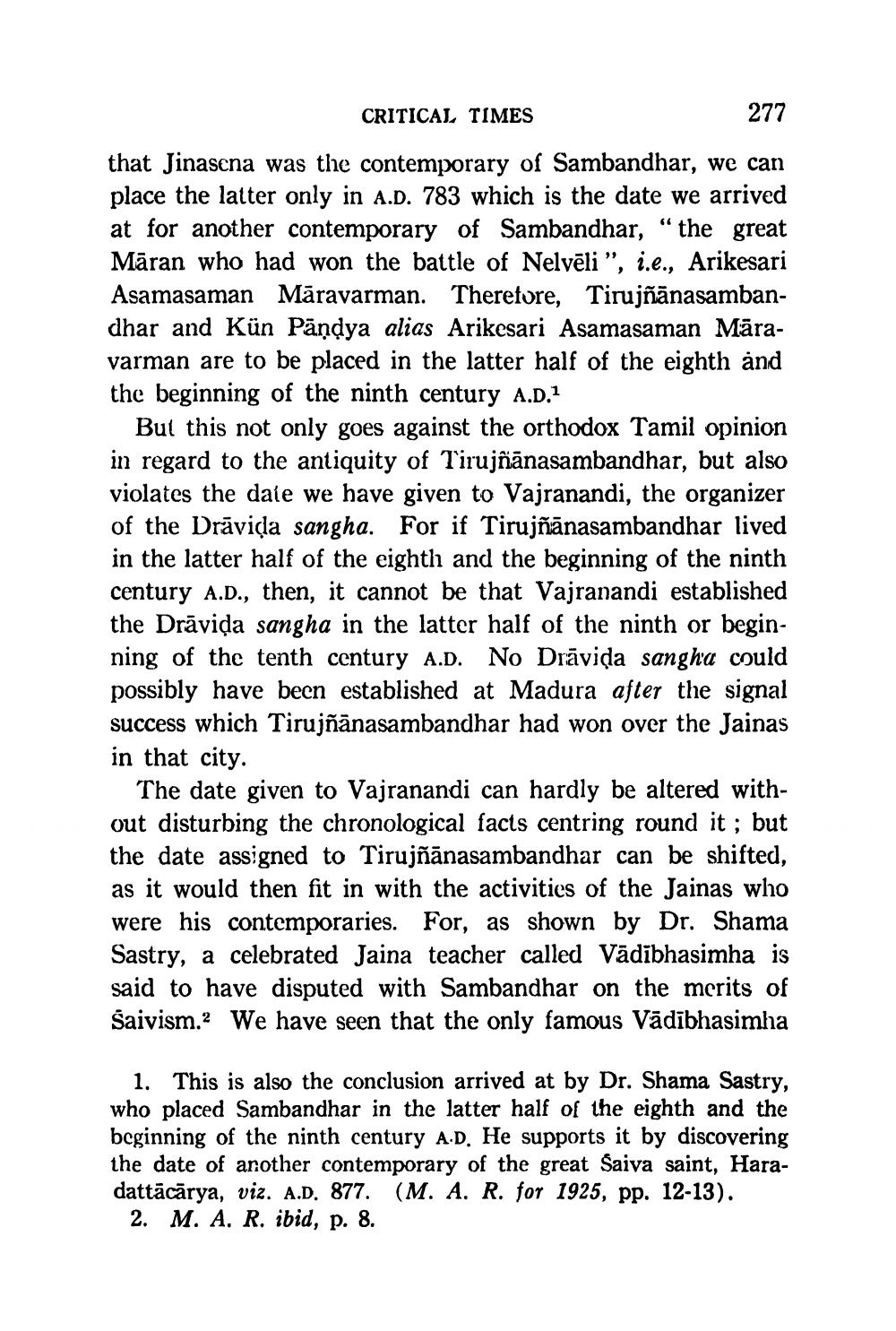________________
CRITICAL TIMES
277
that Jinasena was the contemporary of Sambandhar, we can place the latter only in A.D. 783 which is the date we arrived at for another contemporary of Sambandhar, "the great Māran who had won the battle of Nelvēli”, i.e., Arikesari Asamasaman Māravarman. Therefore, Tirujñānasambandhar and Kün Pāņdya alias Arikesari Asamasaman Māravarman are to be placed in the latter half of the eighth and the beginning of the ninth century A.D.1
But this not only goes against the orthodox Tamil opinion in regard to the antiquity of Tirujñānasambandhar, but also violates the date we have given to Vajranandi, the organizer of the Drāvida sangha. For if Tirujñānasambandhar lived in the latter half of the eighth and the beginning of the ninth century A.D., then, it cannot be that Vajranandi established the Drāvida sangha in the latter half of the ninth or beginning of the tenth century A.D. No Drāvida sangha could possibly have been established at Madura after the signal success which Tirujñānasambandhar had won over the Jainas in that city.
The date given to Vajranandi can hardly be altered without disturbing the chronological facts centring round it ; but the date assigned to Tirujñānasambandhar can be shifted, as it would then fit in with the activities of the Jainas who were his contemporaries. For, as shown by Dr. Shama Sastry, a celebrated Jaina teacher called Vādībhasimha is said to have disputed with Sambandhar on the merits of Saivism.? We have seen that the only famous Vādībhasimha
1. This is also the conclusion arrived at by Dr. Shama Sastry, who placed Sambandhar in the latter half of the eighth and the beginning of the ninth century A.D. He supports it by discovering the date of another contemporary of the great Saiva saint, Haradattācārya, viz. A.D. 877. (M. A. R. for 1925, pp. 12-13).
2. M. A. R. ibid, p. 8.




